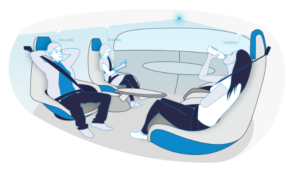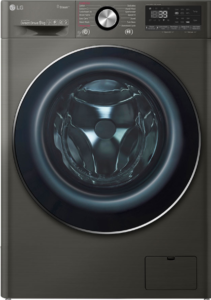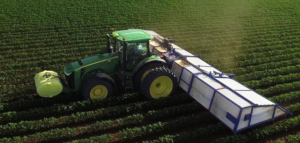
AI Was Everywhere at CES
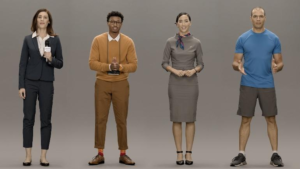
Samsung says the new AI-powered Neon avatars represent a new life form (image courtesy Samsung)
Artificial intelligence was on the tip of the tongue this week at CES, the annual technology extravaganza formerly known as the Consumer Electronics Show. From Samsung’s Neon avatars and LG’s smart washing machine, to Intel’s Tiger Lake processors and the gun-detecting PATSCAN, AI seemed to be everywhere.
Samsung’s research subsidiary, STAR Labs, unveiled its latest AI project, called Neon. Similar to a chatbot, Neon generates a photo-realistic digital avatar that interacts with people in real time. The South Korean technology giant plans to weave the Neons into people’s day-to-day lives, where the avatars will play the role of doctors, personal trainers, and TV anchors giving you the evening news.
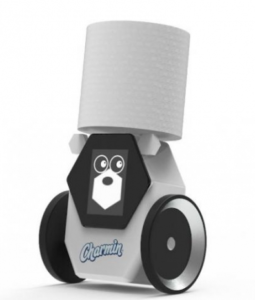
Charmin launched a toilet paper delivery robot, called the “rollbot,” at CES (image courtesy Charmin)
The Neons look remarkably like real-life humans. In fact, Samsung admits on its website that the avatars are “beyond our normal perception to distinguish” from reality. “Neon is like a new kind of life,” STAR Labs CEO Pranav Mistry said in a news release. “There are millions of species on our planet and we hope to add one more.”
Whether the uncanny similarities will pose a problem for actual human consumers has yet to be seen; the Neons will beta later this year.
Intel made a slew of AI announcements around autonomous driving and mobile computing. It demonstrated its Mobileye car navigation technology and announced Tiger Lake, its new mobile processors that are embedded with AI accelerators.
It’s all about spreading AI far and wide, says Intel CEO Bob Swan. “How do we embed intelligence into everything that we make?” Swan said during a press conference this week. “Everything needs to be processed to make the data more relevant and useful.”
Eyeris used CES to showcase its In-Vehicle Scene Understanding (ISU), a system that uses a combination of cameras and sensors to provide “real-time visuospatial data analytics on the edge.” The system uses deep neural nets to crunch sensor data to determine where each of the riders are in a vehicle.
Eyeris says it has amassed the world’s largest collection of in-vehicle data. For example, the system can detect whether each rider is sitting up and reading, on their phone, or slumped over sleeping. Based on this information, other systems may make decisions to optimize the comfort and safety of the passengers.
Bosch got in on the AI action with Virtual Visor, a new AI-infused take on the traditional car visor. The new visor is built of a transparent material, but thanks to an array of cameras and AI algorithms, the visor will partially shade the visor to block the glare of the sun, leaving the driver with a better view of the road.
You knew it was just a matter of time before AI came to washing machines. But what you didn’t know was that time is now. LG used CES to demonstrate the AI DD line of washers, which combines an array of sensors and AI algorithms to determine which washing cycle will best clean the load.
Users will no longer have to carefully match water temperature, spin speed, and the like to account for different types of clothing and linens, because the AI will do it all for them. “The machine does all the thinking for me,” one early user said.
Nothing runs like a Deere – except perhaps a Deere on AI. The American tractor company showcased the See & Spray, a towable machine that uses a combination of cameras and computer vision tech to identify weeds, which get automatically dosed with herbicide.
The See & Spray was originally developed by Blue River, a Sunnyvale, California-based technology firm that Deere acquired in 2017 for $305 million. Deere says the new machine could save farmers up to $30 per acre.
Continuing with the tractor theme, we have word that Bobcat is using augmented reality to improve safety on its remote controlled skid-steer loaders. While the Bobcats are popular with consumers, they have horrendous blind spots, which can make them dangerous for people around them. With the new augmented reality-powered obstacle avoidance feature, operators can geo-fence the Bobcats to prevent them from entering areas.
On the personal hygiene front, Oral-B talked up its iO electric toothbrush at CES. The device uses AI to analyze how a person brushes, including how much pressure they’re using on their gums. It also has sensors to detect how well a person is cleaning the six brushing zones (see image).

Proctor & Gamble wants to “optimize” your skin with the new Opté Precision Skincare System (image courtesy P&G)
If you’re interested in “optimizing” your skin, you may want to hear about Proctor & Gamble’s Opté Precision Skincare System. The device uses a scanner to detect blemishes on the users face, and then uses an inkjet system to apply an “optimizing serum” to the user’s face.
Patriot One Technologies used the show to present PATSCAN, its multi-sensor covert threat detection system. Deployed in a hotel or at a school, the PATSCAN ingests data from covertly installed video, radar, magnetic, and chemical sensors, runs the data through proprietary machine learning algorithms to generate a prediction about users’ intent.
PATSCAN detects the presence of guns and other objects that can cause harm. The company says the system will act as a deterrent to prevent potential bad actors or shooters from engaging in harm.
Related Items:
AI-Infused Beauty Products Enthrall at CES
5 Things AI Is Better At Than You


